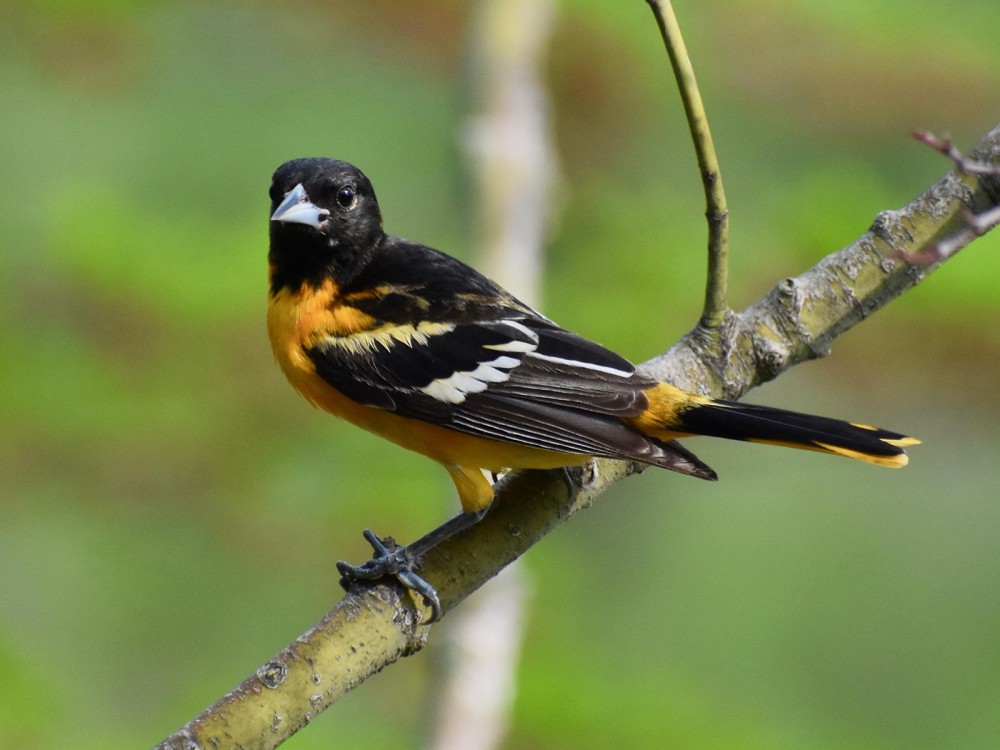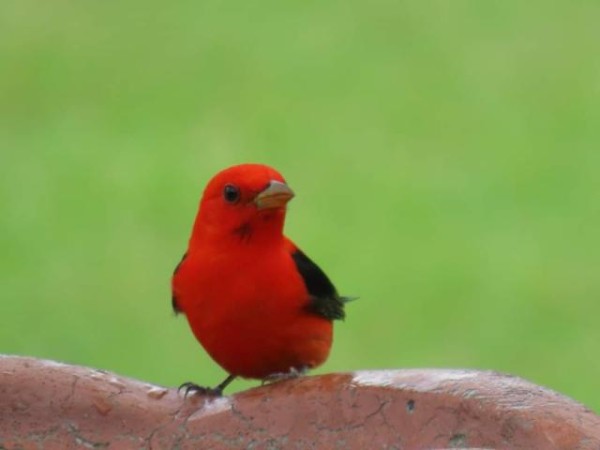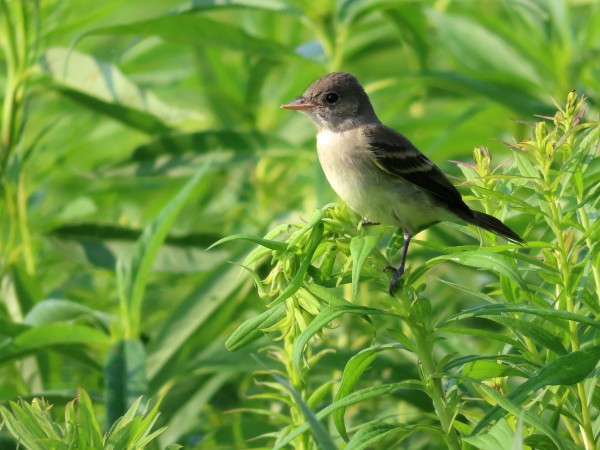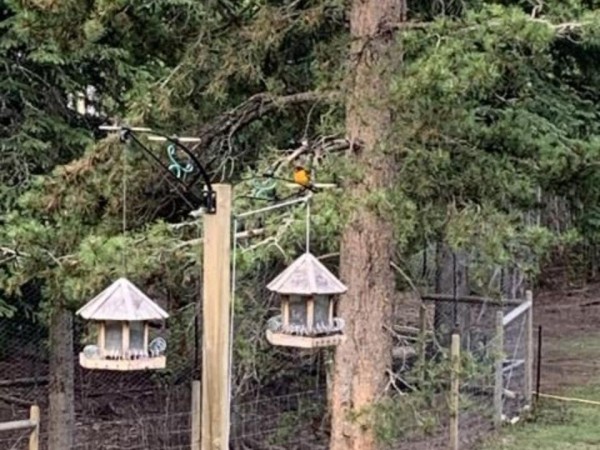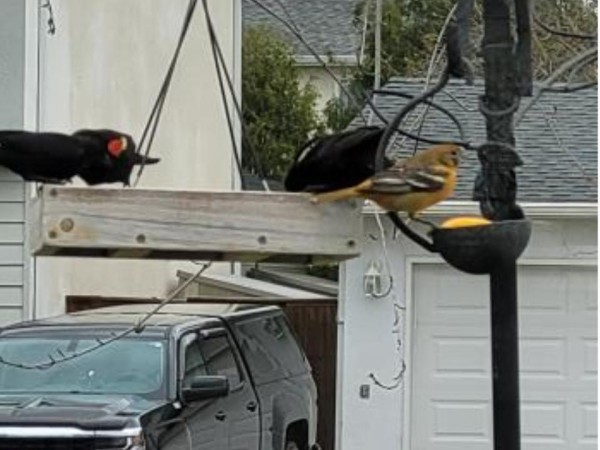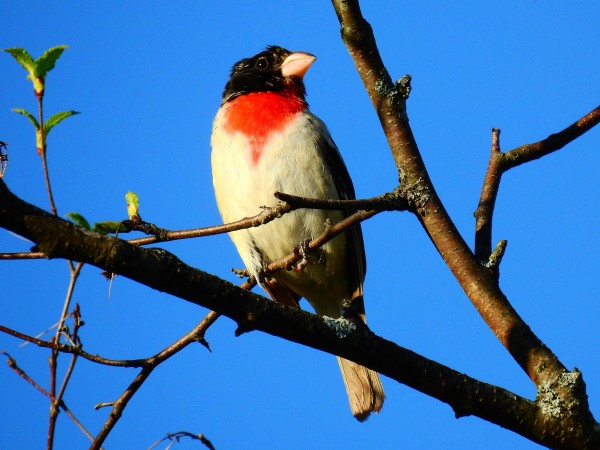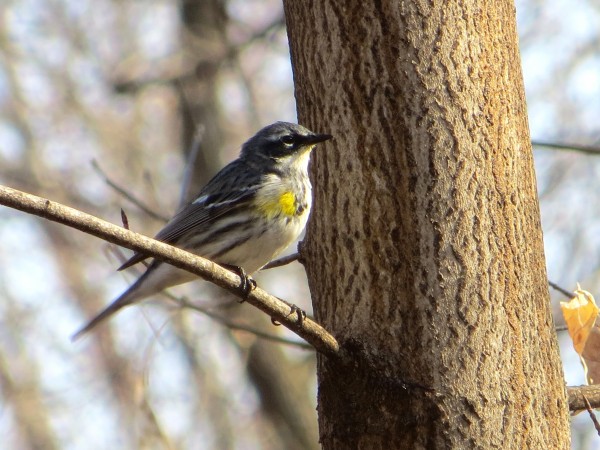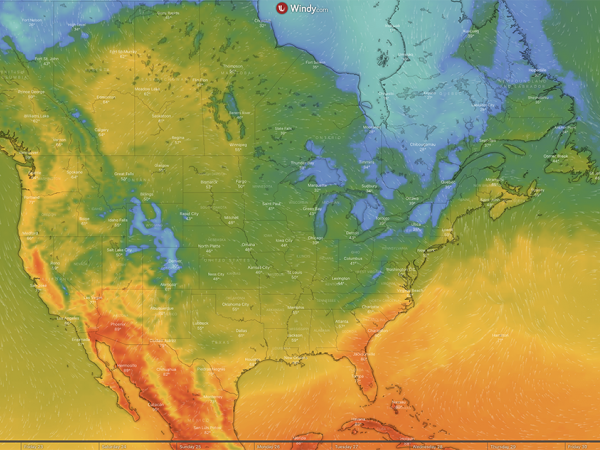Approaching June
June is at the doorstep. Migration is winding down as the breeding season ramps up, but some birds are still on the move. Don’t put your binoculars away just yet!
Weather Forecasts for Migrating Songbirds
Spring migration is winding down but not quite done yet. Dr. David Aborn shares the latest news, including a late-season fallout in New England.
"There have been a couple of weather events this week that have affected migration. If you look at the weather map, you will see a large batch of rain over New England. This is the remnants of a tropical system that moved up from the Gulf of Mexico. The system moved onshore before it could develop into a tropical depression, but it is a reminder that we are about to head into tropical weather season (June 1–November 1). In any case, that rain combined with many birds flying though that area has resulted in fallout conditions. Birders in New York and Massachusetts have seen 24 species over warblers, with Blackpoll Warblers, American Redstarts, Yellow warblers, and Black-throated-blue Warblers being most numerous."
Read more of Dr. David Aborn's 2022 Weather Forecasts for Migrating Songbirds #10»
Chuck Henrikson’s Birding Report
Peak warbler migration has come and and gone at Journey North's home base, the UW–Madison Arboretum. What other species is Chuck Henrikson observing?
"I’m not sure everyone experienced this but I feel the number of warblers is way down. It’s my sense that many of the warbler species have moved through Dane County and continued north . . . We have been seeing and hearing the Willow Flycatchers on Curtis Prairie . . . Today while birding on Longenecker Gardens I saw another flycatcher. This one is much larger than the Willow Flycatcher. It is the Eastern Kingbird . . . Another bird I heard today but did not see was a Black-billed Cuckoo. I have been hearing Yellow-billed Cuckoos in other parts of Dane County but this is the first Black-billed Cuckoo I heard."
Read more of Chuck Henrikson’s birding report #114»
Journey North Species
Baltimore and Bullock's Oriole
More Baltimore Orioles are reaching the northern limits of their breeding range from Alberta to Quebec. No reports yet in New Brunswick or Nova Scotia.
Ursula in Chedderville, AB: "Baltimore Oriole at 7:45am at our bird feeder" (05/25/2022)
Colorado remains a hotspot for Bullock's Oriole sightings.
Lisa in Estes Park, CO: "Female Bullock's oriole eating grape jelly at our feeder." (05/22/2022)
Barn Swallow
After long journeys, Barn Swallows are shifting their focus to the next generation.
Bill in Thief River Falls, MN: "Each year a single pair of Barn Swallows nest under one of my eves. They're back checking out this years' spot." (05/22/2022)
Common Loon
First sightings of Common Loons are winding down as the breeding season begins. Check out The Loon Project and Loon Preservation Committee to learn about about loon activity during the summer months.
Lauren in Worcester, MA: "[Common Loon] seen on south side of Coes Pond at 7pm." (05/21/2022)
Red-Winged Blackbird
Did you know that Red-winged Blackbirds belong to the same family of birds—Icteridae—as Baltimore Orioles? One Journey North volunteer saw both species on their best behavior at a feeder.
Dorothy in Winnipeg, MB: "Red-winged Blackbirds eating black oil sunflower seed from the feeder. Note female Baltimore Oriole also." (05/13/2022)
Keep Reporting
Migration is winding down but some birds are still on the move. Keep reporting first observations of Baltimore and Bullock’s Orioles, Barn Swallows, Common Loons, and Red-winged Blackbirds to Journey North. If possible, include photos in your reports (one photo per report). Photos are always helpful to properly identify species and verify reports. And if you observe other bird species, please report under the category All Other Signs of Spring.

